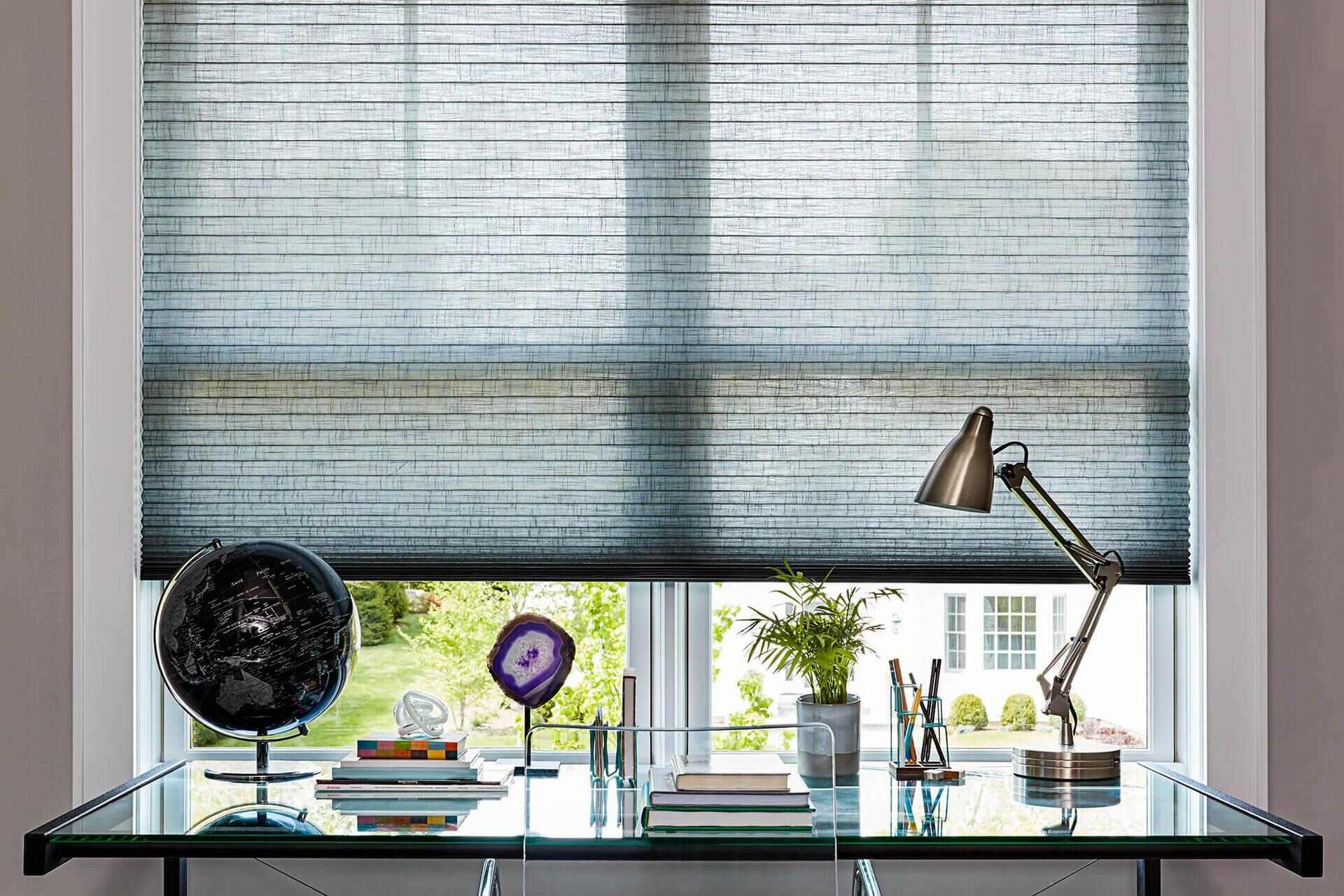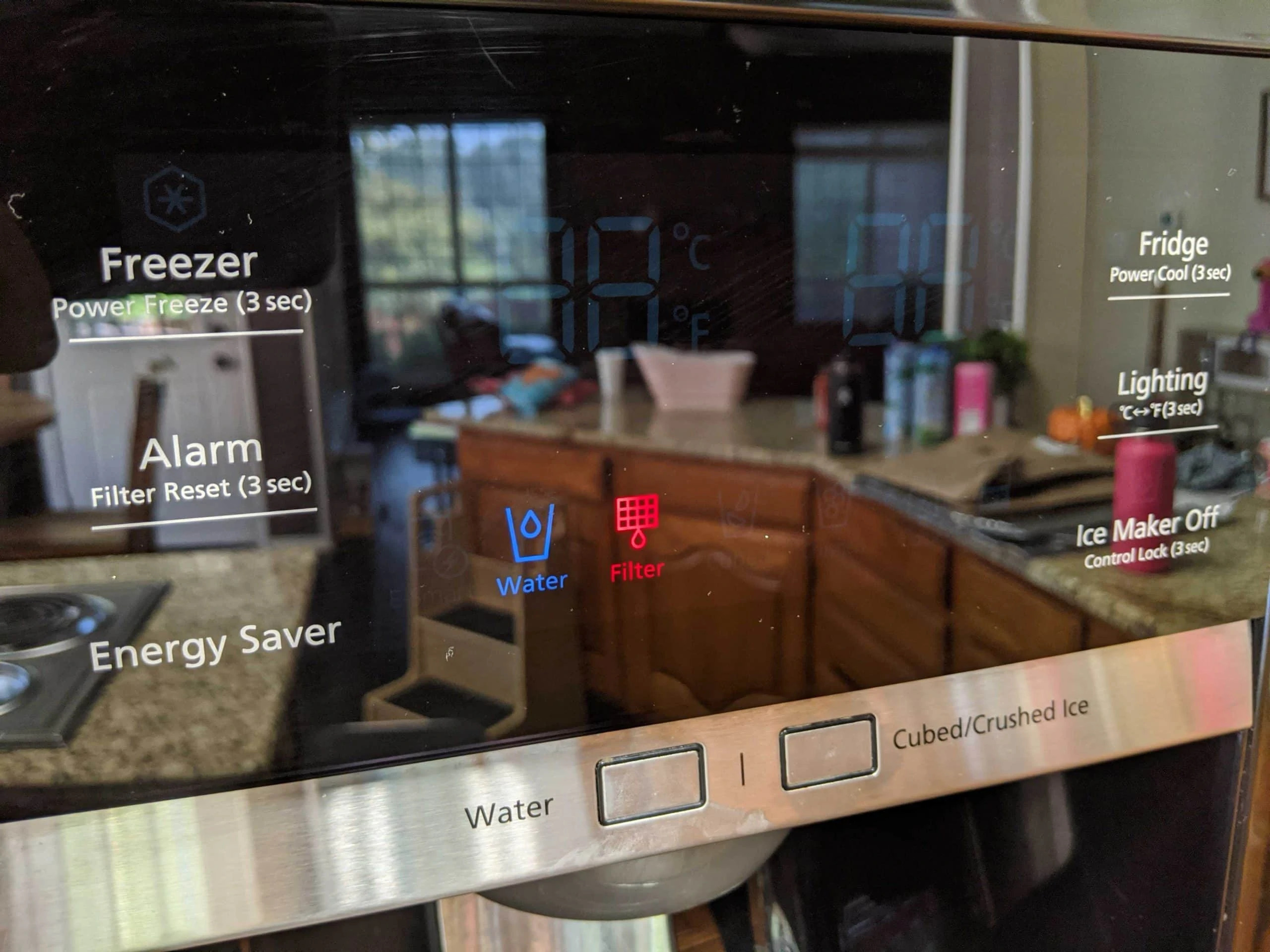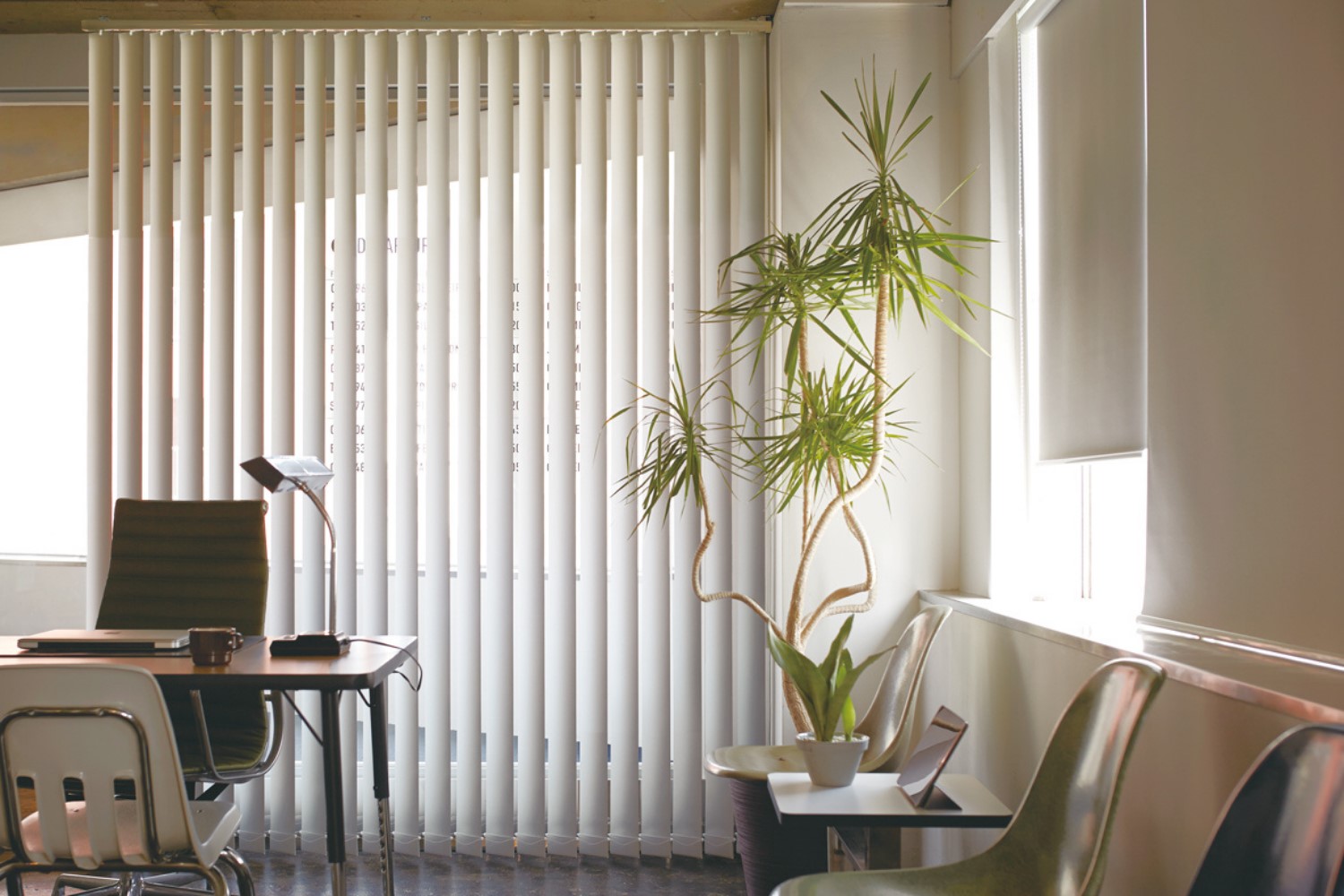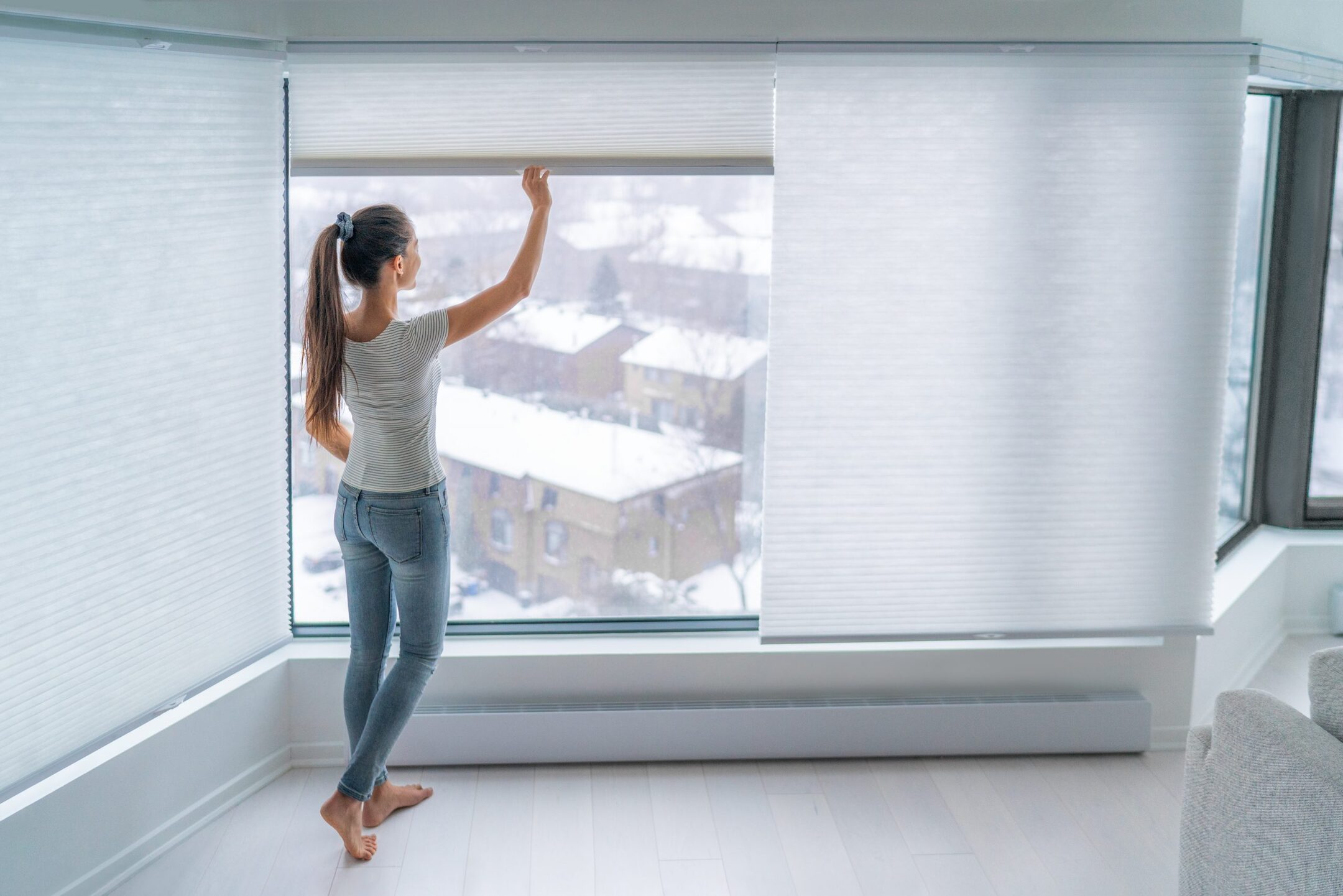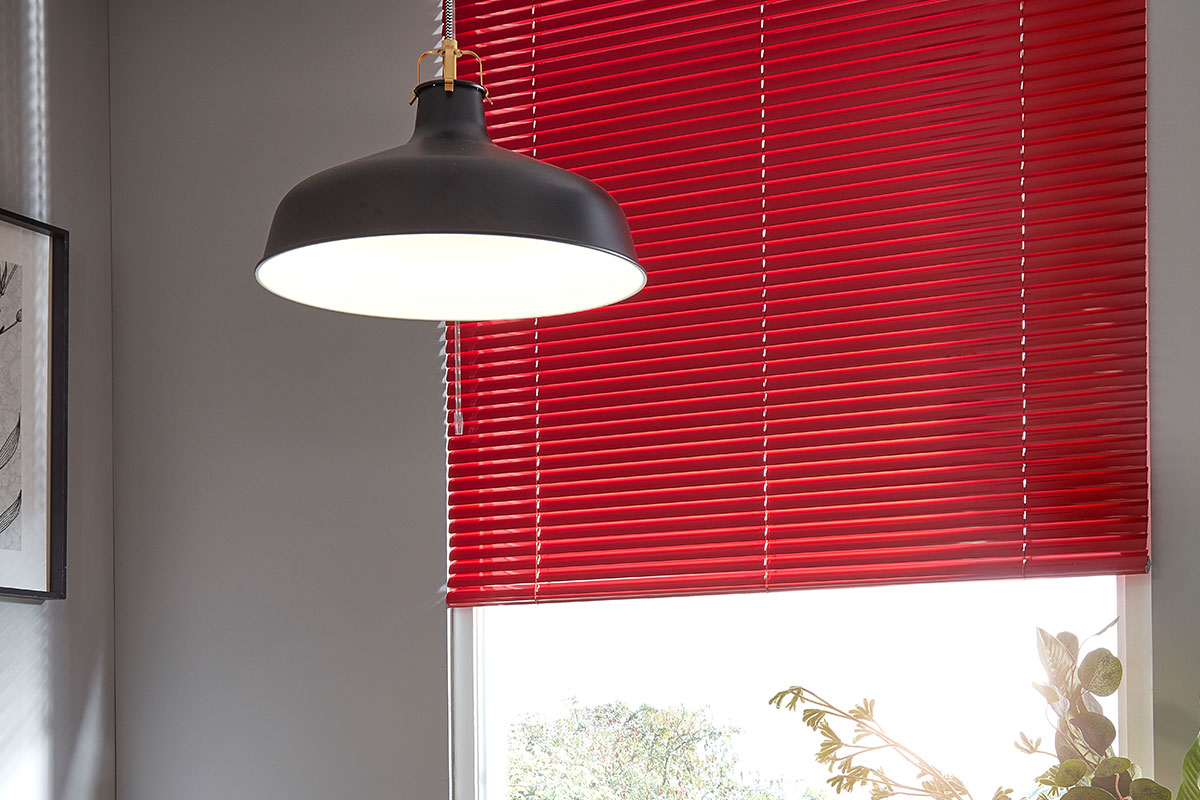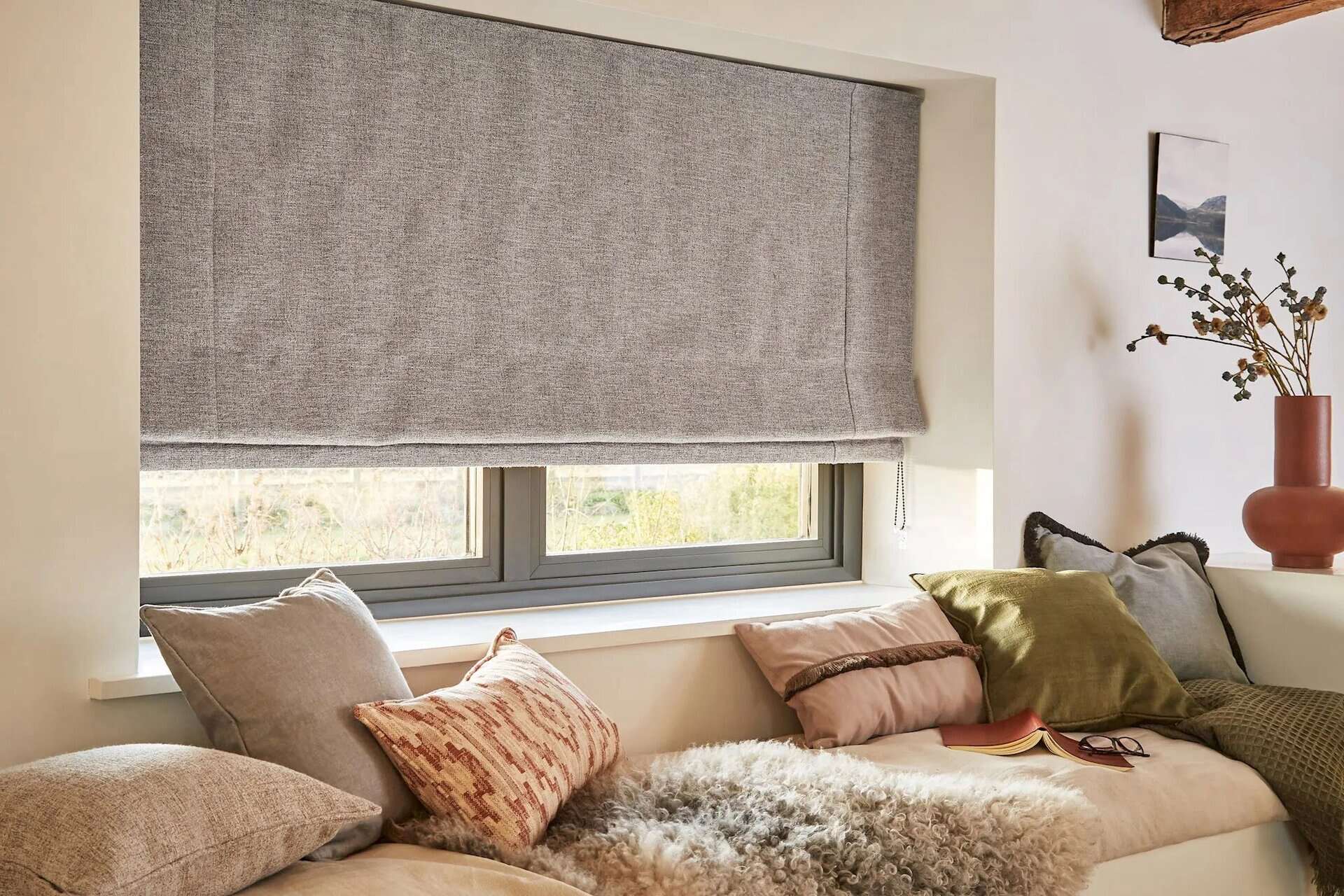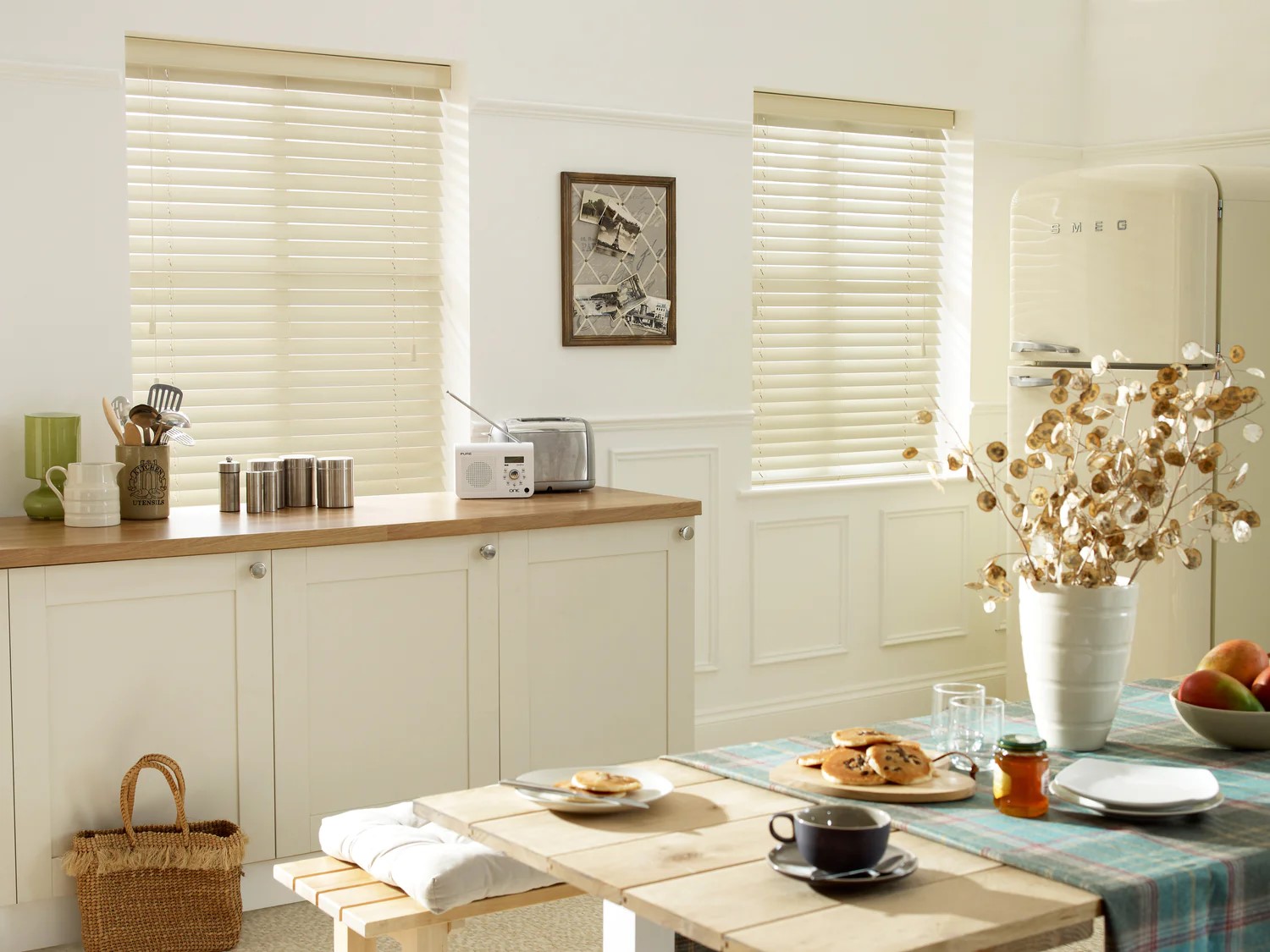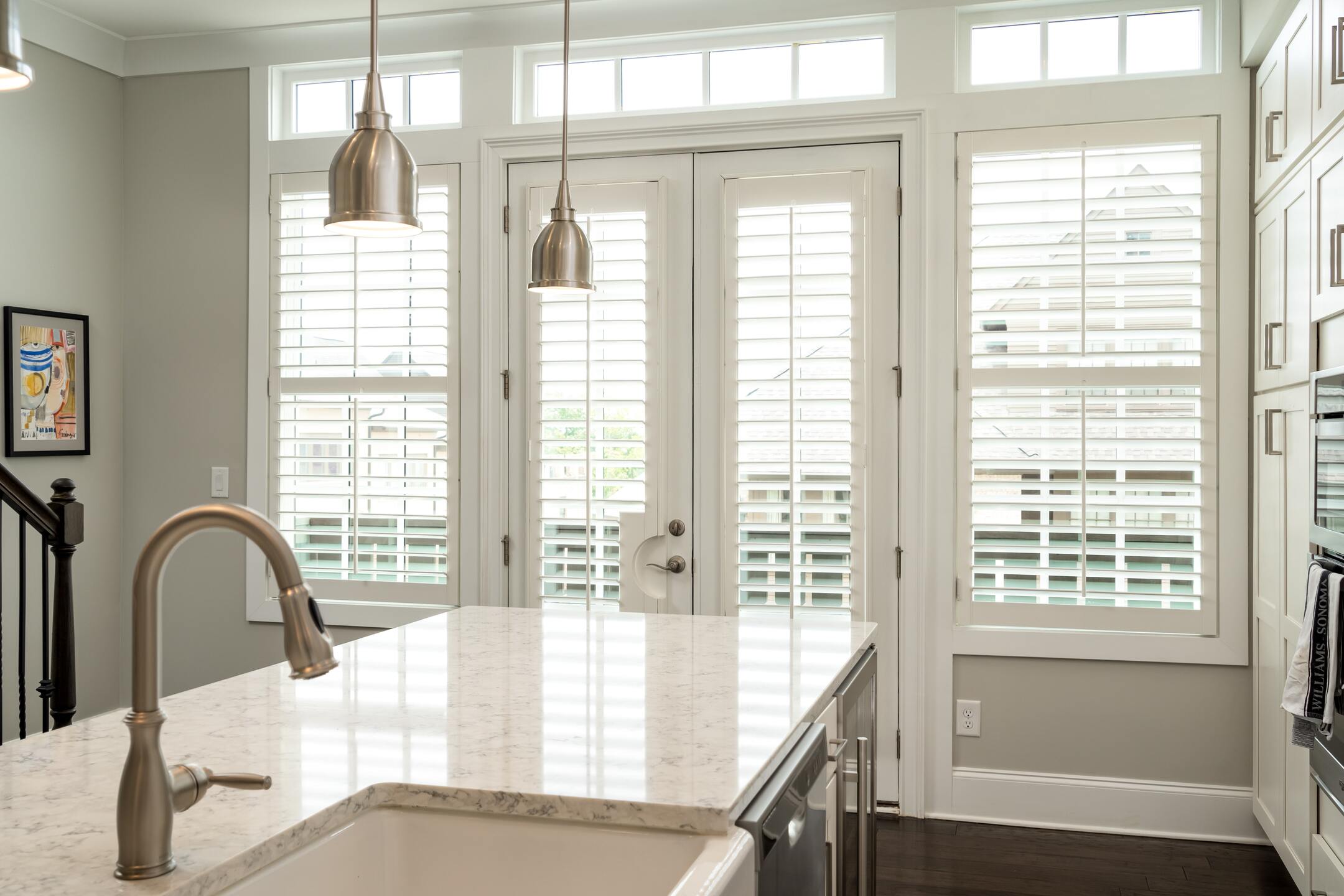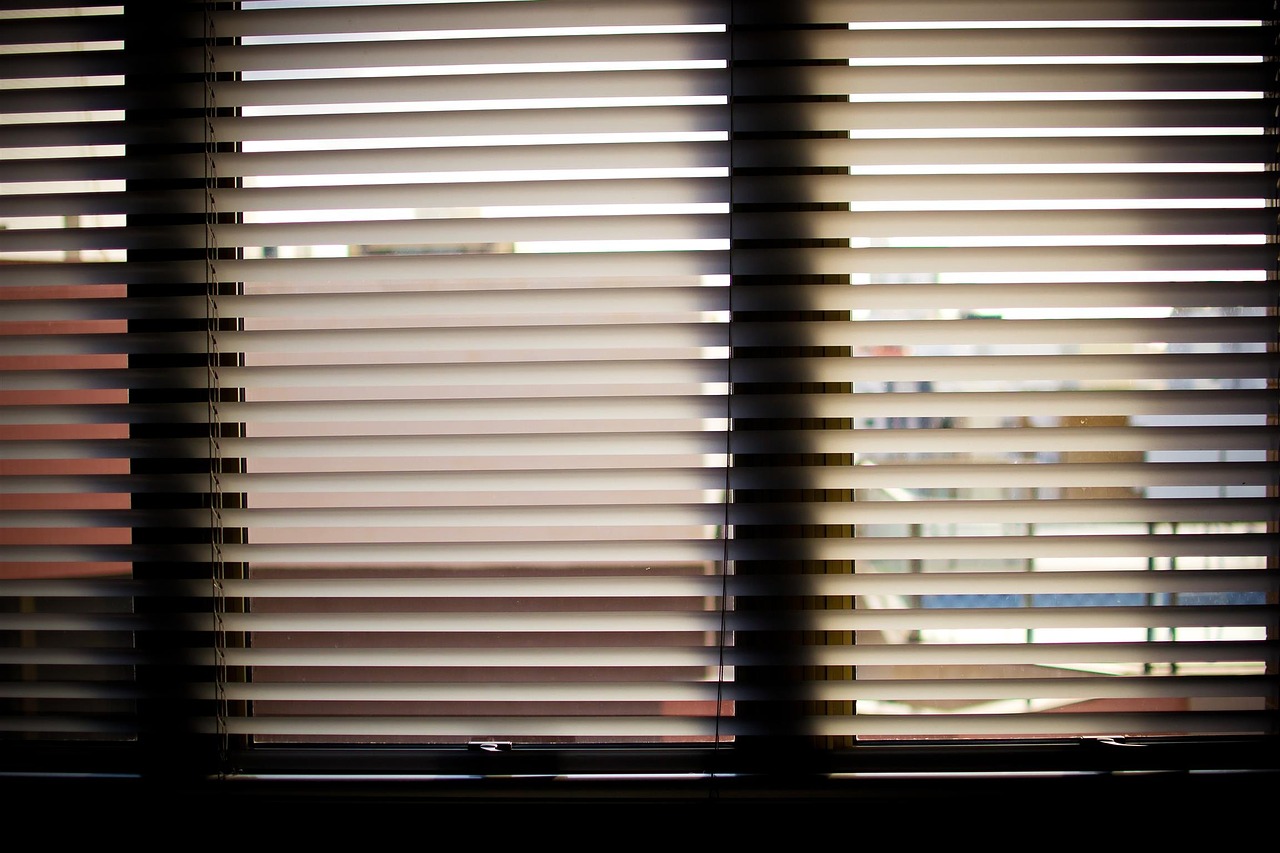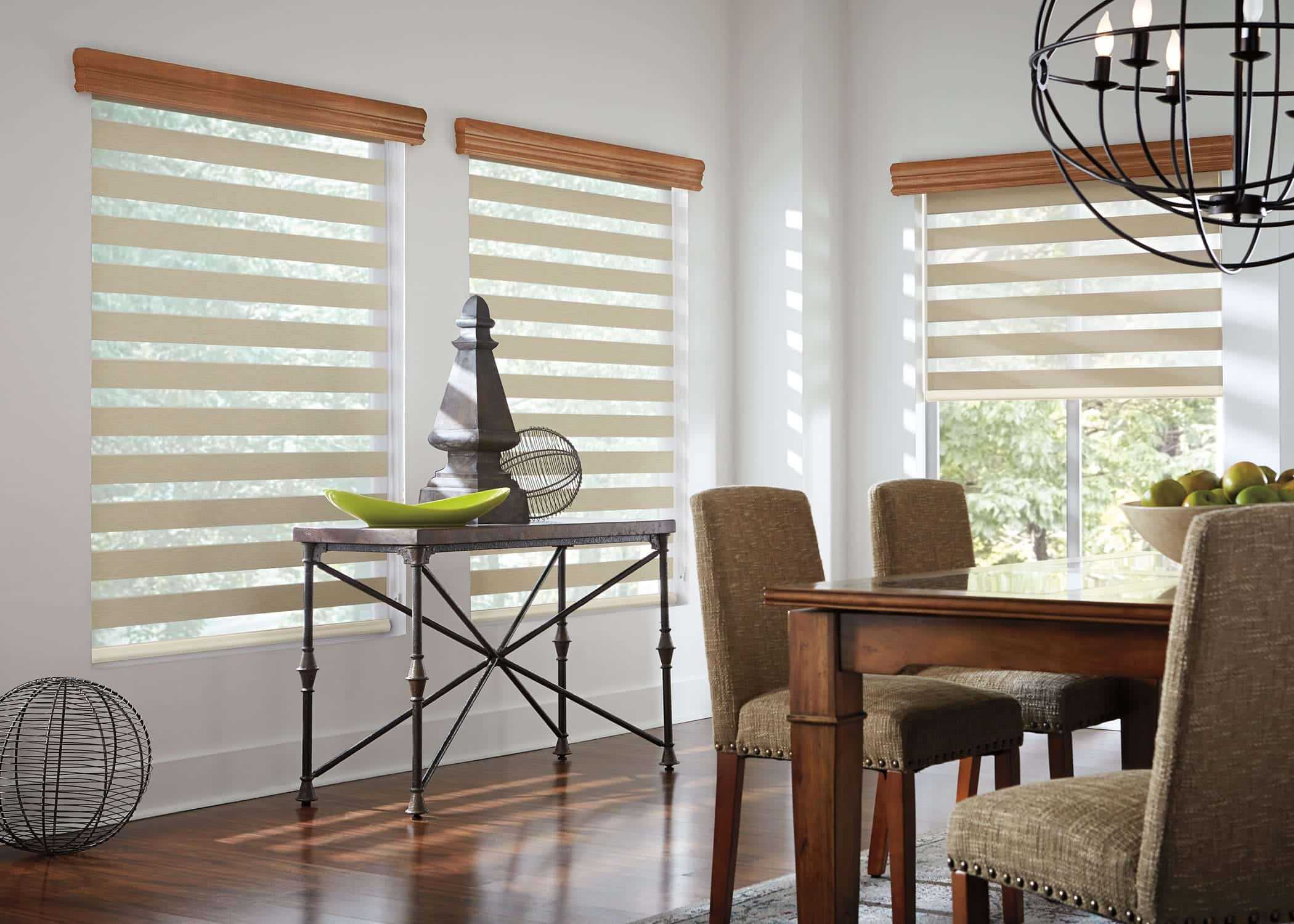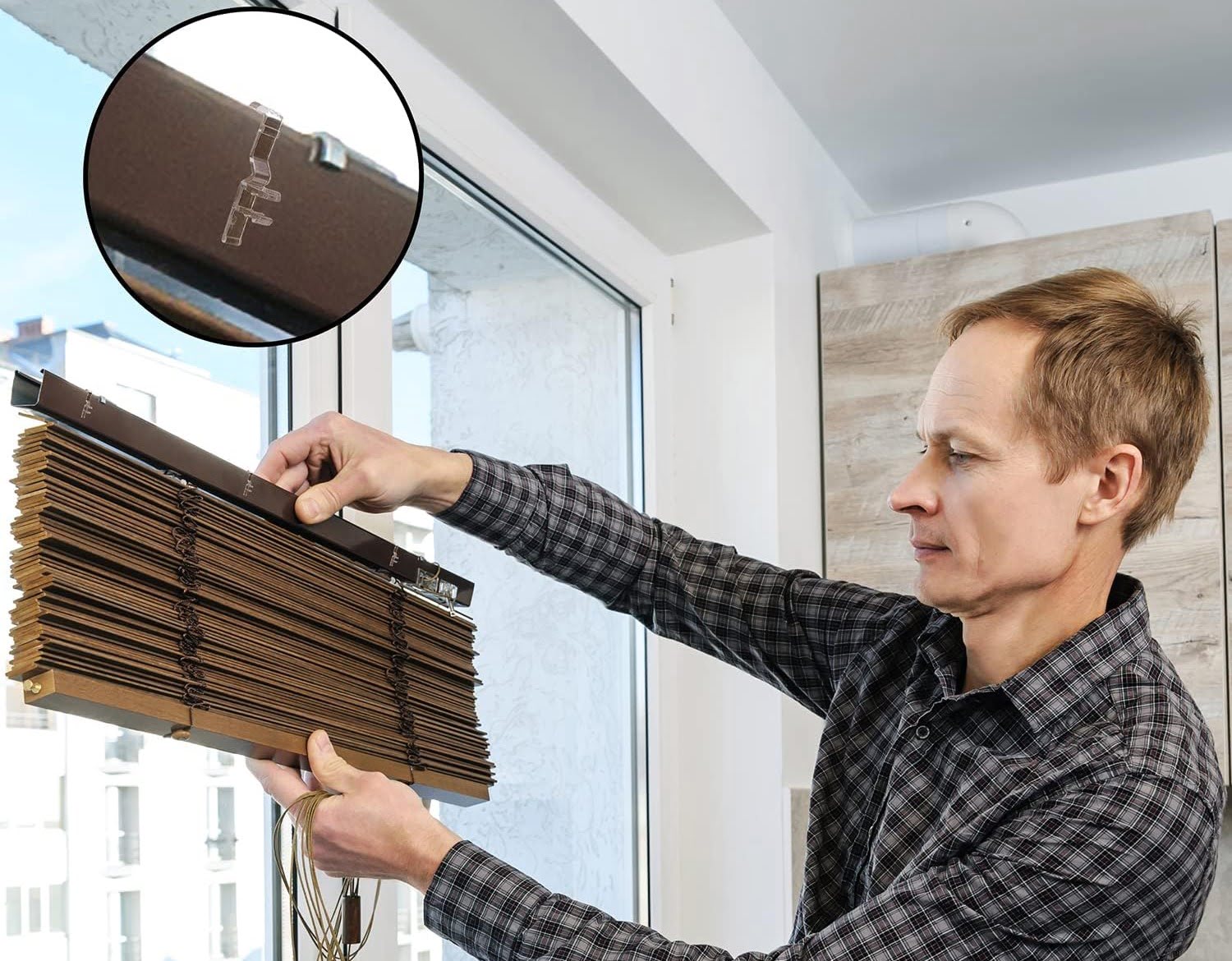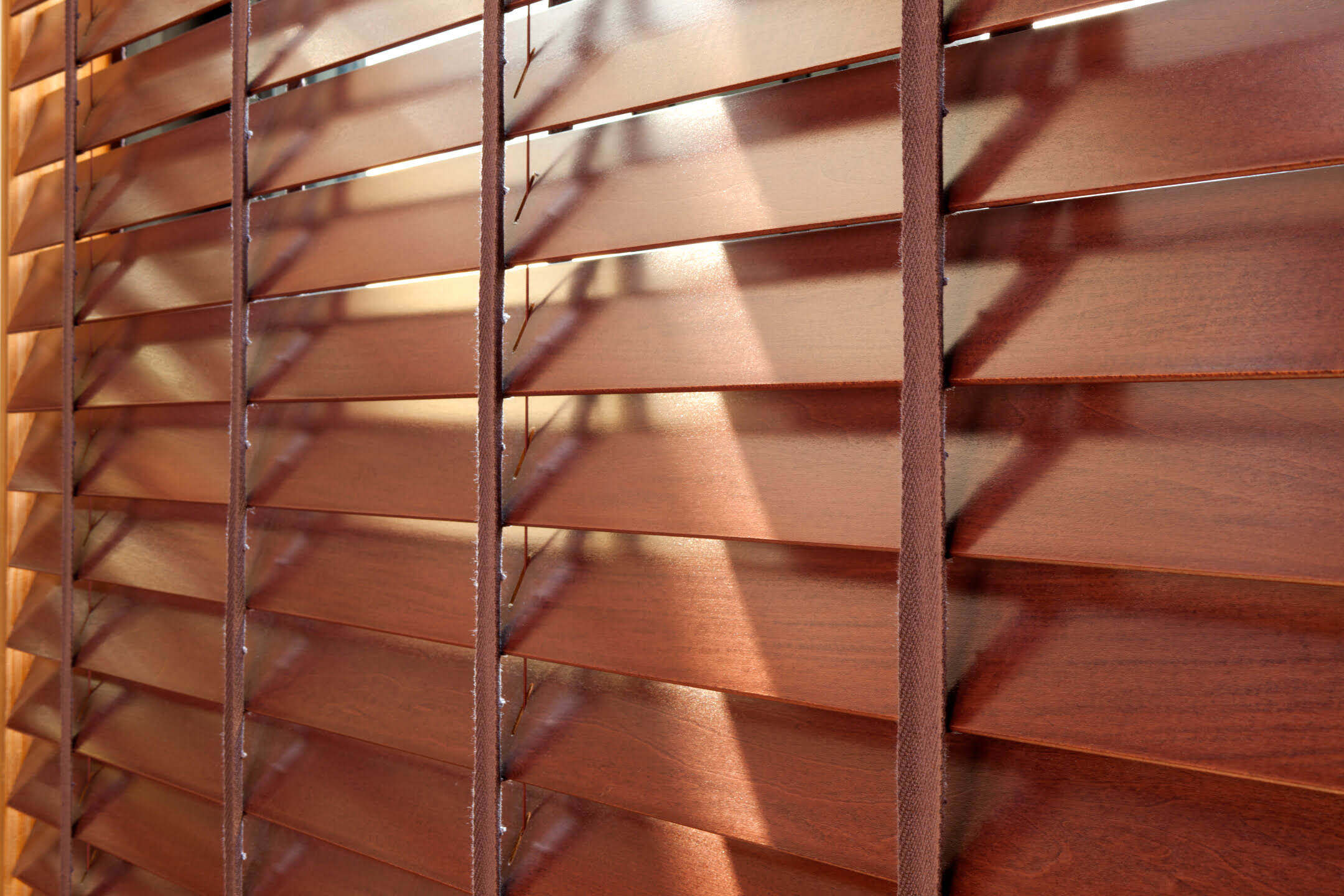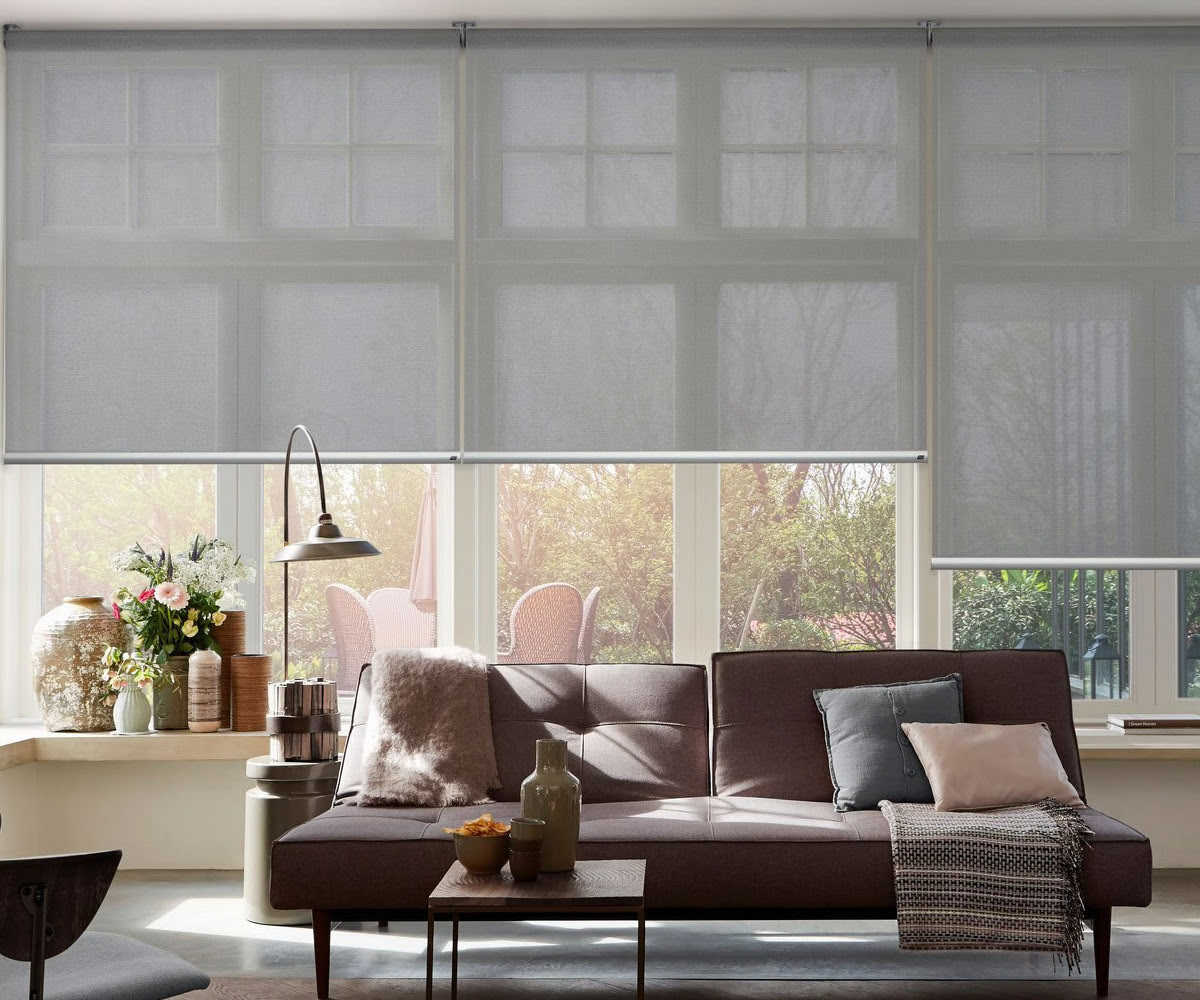

Articles
What Are Light Filtering Blinds
Modified: January 20, 2024
Discover the benefits of light filtering blinds with our informative articles. Learn how they can enhance your home's ambiance and provide privacy while still allowing natural light to filter through.
(Many of the links in this article redirect to a specific reviewed product. Your purchase of these products through affiliate links helps to generate commission for Storables.com, at no extra cost. Learn more)
Introduction
Light filtering blinds are a popular window treatment option for homeowners looking to enhance privacy, control the amount of natural light entering a room, and add a touch of style to their living spaces. These versatile window coverings offer a range of benefits, from providing a soft, diffused light to blocking harmful UV rays.
Whether you want to create a cozy ambiance in your bedroom or reduce glare in your home office, light filtering blinds can be a practical and aesthetically pleasing solution. In this article, we will explore the definition of light filtering blinds, how they work, their advantages and disadvantages, the types available, and tips for choosing the right ones for your needs.
By the end of this article, you will have a clear understanding of light filtering blinds and be well-equipped to make an informed decision when it comes to selecting the perfect window treatment for your home.
Key Takeaways:
- Light filtering blinds offer a perfect balance of natural light and privacy, enhancing the ambiance of any room while protecting furniture from UV damage and contributing to energy efficiency.
- With a variety of styles and materials available, light filtering blinds provide a practical and aesthetically pleasing window treatment solution for homeowners seeking to control natural light and create a comfortable living space.
Read more: What Is Light Filtering Curtains
Definition of Light Filtering Blinds
Light filtering blinds refer to window coverings that allow natural light to enter a room while still providing privacy and reducing glare. Unlike blackout blinds, which block out light completely, light filtering blinds are designed to soften and diffuse the incoming sunlight. They are constructed using materials that have a certain level of light-transmitting properties, allowing gentle illumination without sacrificing privacy.
The primary function of light filtering blinds is to filter the sunlight and create a comfortable environment by reducing the intensity of the natural light. This helps to prevent harsh glares on screens, minimize fading of furnishings due to UV exposure, and create a soothing ambiance in the room. Light filtering blinds are a popular choice for living rooms, bedrooms, and other areas where homeowners desire a balance of natural light and privacy.
These blinds are available in a variety of styles, including horizontal blinds, vertical blinds, cellular shades, and roller shades. Each type offers its own unique features and benefits but shares the common characteristic of allowing light to pass through while ensuring privacy.
Light filtering blinds are often made from materials such as polyester, linen, or sheer fabrics. These materials are chosen for their effective light diffusion properties and durability. Some blinds may also incorporate additional features, such as UV protection to safeguard your furniture and flooring from the damaging effects of the sun’s rays.
How Light Filtering Blinds Work
Light filtering blinds work by utilizing materials that allow light to pass through while diffusing it and reducing its intensity. The specific construction and design of these blinds enable them to strike a balance between providing privacy and allowing natural light to enter a room.
One common type of light filtering blinds is the horizontal blind. These blinds consist of slats that can be adjusted to control the amount of light that enters the room. When the slats are tilted open, they allow sunlight to pass through while dispersing the light and creating a softer illumination. The downward angle of the slats also helps to reduce glare and provide privacy during the day.
Vertical blinds operate on a similar principle but are comprised of vertical slats that can be opened or closed. When the slats are partially open, they allow natural light to filter into the room while limiting the outside view. By adjusting the position of the slats, homeowners can customize the amount of light and privacy they desire.
Cellular shades, also known as honeycomb shades, are another type of light filtering blinds that work differently. These shades are made up of multiple layers of pleated fabric, which form air pockets that trap air and act as an insulating barrier. The unique design of cellular shades not only filters light but also provides thermal insulation, making them an excellent choice for energy-efficient homes.
Roller shades are another popular option for light filtering. They consist of a single piece of fabric that can be rolled up or down to adjust the amount of light entering the room. The fabric of roller shades is specially designed to filter and diffuse light, creating a pleasant and soft ambiance.
No matter the type of light filtering blind, the control options vary. Some blinds utilize cords or chains to adjust the slats or shades, while others incorporate modern motorized systems that allow for easy, remote-controlled operation.
Overall, light filtering blinds work by selectively allowing natural light into a room while reducing glare and maintaining privacy. They effectively diffuse the light, creating a comfortable and pleasant atmosphere without compromising on privacy or the need for sunlight.
Advantages of Light Filtering Blinds
Light filtering blinds offer a range of advantages that make them a popular choice among homeowners. Here are some of the key benefits of using light filtering blinds:
- Enhanced Privacy: Light filtering blinds provide an excellent balance between privacy and natural light. They allow you to enjoy the beautiful view outside while preventing prying eyes from seeing into your home. These blinds are particularly useful for ground-floor windows or rooms facing busy streets.
- Natural Light Control: Light filtering blinds allow natural light to enter a room while diffusing and softening it. This creates a gentle and pleasant ambiance, making the space feel brighter and more inviting. It also helps to reduce glare on TVs, computer screens, and other electronic devices, making it easier to work, study, or relax.
- UV Protection: Light filtering blinds help to protect your furniture, artwork, and flooring from the damaging effects of UV rays. They filter out a significant amount of harmful UV radiation that can cause fading and discoloration over time. By installing light filtering blinds, you can extend the lifespan of your belongings and keep them looking vibrant and new for longer.
- Energy Efficiency: Light filtering blinds can contribute to improved energy efficiency in your home. By allowing natural light to enter during the day, you can rely less on artificial lighting, reducing energy consumption and lowering your utility bills. Additionally, some light filtering blinds, such as cellular shades, provide insulation, helping to regulate the temperature and reduce heat transfer, thus saving energy on cooling and heating.
- Aesthetic Appeal: Light filtering blinds come in a variety of styles, materials, and colors, allowing you to choose the ones that complement your interior décor. Whether you prefer a sleek and modern look or a more traditional and rustic feel, there are light filtering blinds available to suit your aesthetic preferences and enhance the overall look of your home.
Overall, light filtering blinds offer a perfect blend of privacy, natural light control, UV protection, energy efficiency, and aesthetic appeal. They are a versatile and practical window treatment option that can enhance the comfort and beauty of any room in your home.
Disadvantages of Light Filtering Blinds
While light filtering blinds have numerous advantages, it is important to consider their potential disadvantages as well. Here are some factors to keep in mind:
- Limited Privacy at Night: Light filtering blinds may not provide adequate privacy during the nighttime when indoor lights are turned on. Depending on the specific blind material and the brightness of your interior lighting, outsiders may be able to see into your home. To address this concern, you can consider pairing light filtering blinds with curtains or additional window coverings for added privacy in the evenings.
- Different Light Control Options: Light filtering blinds offer limited options for controlling the amount of light entering a room compared to other types of blinds. While you can adjust the slats or shades to alter the intensity of the light, it is not as precise as the control you have with blinds that offer both tilting and lifting functions. If precise light control is a priority for you, you may want to consider other options such as adjustable blinds or curtains.
- Less Privacy in Certain Settings: Light filtering blinds may provide less privacy in certain settings, such as offices or areas with close neighbors, where a higher level of privacy may be required. In these cases, you might consider using additional window treatments, such as sheer curtains or privacy films, to enhance privacy while still enjoying the benefits of light filtering.
- Maintenance Requirements: Light filtering blinds, particularly those made from fabrics, may require regular cleaning and maintenance to keep them in good condition. Dust, dirt, and allergens can accumulate on the blinds over time, requiring occasional cleaning to maintain their appearance and performance. However, many types of light filtering blinds can be easily maintained with regular dusting or vacuuming.
- Cost Considerations: Light filtering blinds vary in cost depending on the style, material, and size you choose. While they are generally more affordable than blackout blinds or custom-made window treatments, the price can still add up, especially if you have multiple windows to cover. It’s important to consider your budget and compare different options to find the right balance between cost and quality.
Despite these potential downsides, light filtering blinds remain a popular choice among homeowners due to their numerous advantages. By understanding and addressing these disadvantages, you can make an informed decision that suits your specific needs and preferences.
Light filtering blinds are designed to allow natural light into a room while still providing privacy. They are a great option for spaces where you want to maintain a bright and airy feel while also controlling the amount of sunlight entering the room.
Read more: What Are Roller Blinds
Different Types of Light Filtering Blinds
Light filtering blinds are available in various styles, each offering unique features and aesthetics. Here are some of the most common types of light filtering blinds:
- Horizontal Blinds: Horizontal blinds consist of slats that can be adjusted to control the amount of light and privacy. They are typically made of materials like aluminum, wood, or faux wood. With horizontal blinds, you can tilt the slats to let in filtered light while maintaining privacy.
- Vertical Blinds: Vertical blinds have vertical slats that can be rotated or pulled to the side to control light and privacy. These blinds are often used for wide windows, sliding glass doors, or room dividers. They are available in various materials, including fabric, PVC, or vinyl.
- Cellular Shades: Also known as honeycomb shades, cellular shades are made of pleated fabrics that form honeycomb-like cells. These shades are effective at insulating your home and offer excellent light filtering capabilities. They come in various cell sizes, colors, and opacities to suit different preferences.
- Roller Shades: Roller shades are made of a single piece of fabric that can be rolled up or down using a mechanism. They offer simplicity and a sleek look, and the fabric choices provide different levels of light filtering. Roller shades are ideal for those seeking clean lines and minimalistic design.
- Sheer Shades: Sheer shades feature soft fabric vanes suspended between sheer panels. These blinds provide a subtle light filtering effect while offering a degree of privacy. Sheer shades are an excellent choice if you want to diffuse light and maintain a view of the outdoors.
- Pleated Shades: Pleated shades are made of a single piece of fabric with uniform pleats that stack neatly at the top when raised. They offer a soft light filtering effect and add texture to your windows. Pleated shades come in various patterns, colors, and opacity levels.
- Woven Wood Shades: Woven wood shades are made from natural materials like bamboo, grasses, or reeds. They provide a unique, organic look and allow filtered light to enter your space. These shades are ideal for creating a warm and inviting atmosphere in your home.
These are just a few examples of the many types of light filtering blinds available in the market. Each type offers its own set of features and visual appeal, allowing you to find the perfect blinds that match your style and functional requirements.
Choosing the Right Light Filtering Blinds
When it comes to selecting the right light filtering blinds for your home, there are several factors to consider. Here are some tips to help you make an informed decision:
- Light Filtering Level: Determine the level of light filtering you desire. Some blinds offer a higher level of light filtering, while others provide a more subtle effect. Think about the specific room and its purpose to determine the right amount of light you want to let in.
- Style and Aesthetics: Consider the overall style and aesthetic of your room. Light filtering blinds come in various materials, colors, and designs, so choose one that complements your existing decor and enhances the visual appeal of your space.
- Privacy Needs: Assess your privacy requirements. If privacy is a top priority, opt for blinds that offer enhanced privacy features such as tighter slat closures or layered fabrics.
- Window Size and Shape: Take into account the size and shape of your windows. Some blinds work better for larger windows, while others are more suitable for smaller windows or unique shapes. Ensure that the blinds you choose are a good fit for your specific window dimensions.
- Material Selection: Consider the material of the blinds. Different materials offer varying levels of light filtering, durability, and maintenance requirements. Decide whether you prefer fabrics, wood, aluminum, or synthetic materials based on your preferences and needs.
- Control Options: Evaluate the control options available for the blinds. Some blinds offer manual adjustments, while others have motorized options for added convenience. Choose the control mechanism that best suits your lifestyle and preferences.
- Budget: Set a budget for your light filtering blinds. Prices vary depending on the type, material, and brand. Determine your budget range and explore options within that range to find the best value for your investment.
- Professional Installation: Decide if you prefer professional installation or if you are comfortable with DIY installation. Some blinds may require professional expertise for proper installation, while others can easily be installed by following manufacturer instructions.
By considering these factors, you can narrow down your options and make an informed decision on the right light filtering blinds for your home. Remember to prioritize your specific needs and preferences to ensure you find the perfect balance of aesthetics, functionality, and price.
Installation and Maintenance of Light Filtering Blinds
Once you have chosen the perfect light filtering blinds for your home, it’s important to ensure proper installation and maintenance to maximize their performance and longevity. Here are some tips to guide you in the installation and maintenance process:
Installation:
- Read the Instructions: Carefully read the manufacturer’s instructions that come with the blinds. It is essential to understand the specific installation steps and any special considerations for your particular blinds.
- Gather the Necessary Tools: Make sure you have all the required tools for installation, such as a measuring tape, level, screwdriver, and drill. Having the right tools on hand will make the installation process smoother and more efficient.
- Measure Twice: Measure your windows accurately before installing the blinds. Take into account the width and height of the window frame and any additional space needed for mounting brackets. Double-check your measurements to ensure a precise fit.
- Mounting Considerations: Determine if you need an inside or outside mount for your blinds. An inside mount fits within the window frame, while an outside mount covers the entire window frame. Consider your window type, size, and personal preference when choosing the mounting option.
- Secure Mounting Brackets: Install the mounting brackets securely and ensure they are level. This will provide a stable foundation for your blinds and ensure they operate smoothly. Use appropriate screws and anchors based on your wall type for added stability.
- Follow Precautions: Take necessary precautions during installation, especially when working with motorized blinds or when installing blinds in high or hard-to-reach areas. Ensure your safety and the safety of others while handling and installing the blinds.
- Test the Operation: Once installed, test the operation of the blinds to ensure they open, close, and adjust properly. Make any necessary adjustments before finalizing the installation.
Maintenance:
- Regular Dusting: Dust your light filtering blinds regularly to prevent dirt and debris from building up. Use a soft cloth, duster, or vacuum brush attachment to gently remove dust from the blinds’ surfaces and slats.
- Spot Cleaning: If your blinds require more thorough cleaning, spot clean them using a mild detergent or cleaner recommended by the manufacturer. Avoid using harsh chemicals or abrasive cleaners, as they can damage the blinds’ materials.
- Stain Removal: If you notice any stains on the blinds, address them promptly. Blot the stain with a mild cleaner or spot treatment, following the manufacturer’s instructions. It’s important to tackle stains as soon as possible to prevent them from becoming more difficult to remove.
- Regular Inspection: Periodically inspect the blinds for any damage, wear and tear, or loose components. Check the cords, mechanisms, and slats to ensure they are functioning properly. Address any issues immediately to prevent further damage or accidents.
- Professional Cleaning/Repair: If your blinds require professional cleaning or repair, contact a reputable service provider with expertise in blind maintenance and repair. They can handle more complex cleaning processes and address any mechanical or structural issues.
- Child Safety: If you have young children or pets, ensure that your blinds are equipped with child safety features, such as cordless options or cord safety devices. Regularly inspect and maintain these safety features to ensure they are functioning correctly.
By following these installation and maintenance tips, you can ensure that your light filtering blinds function properly, remain visually appealing, and have a longer lifespan. Regular care and maintenance will help you enjoy the benefits of light filtering blinds for years to come.
Conclusion
Light filtering blinds offer a practical and stylish solution for controlling natural light and enhancing privacy in your home. With their ability to softly filter sunlight and create a pleasant ambiance, these blinds have become a popular choice among homeowners.
Throughout this article, we have explored the definition of light filtering blinds, their functionality, advantages, disadvantages, different types, and tips for choosing and maintaining them. Light filtering blinds strike a balance between allowing natural light to enter a room and providing privacy, making them an excellent choice for various living spaces.
From horizontal blinds to vertical blinds, cellular shades, roller shades, sheer shades, pleated shades, and woven wood shades, there is a wide range of options available to suit different styles, preferences, and needs. By selecting the right kind of light filtering blinds, you can transform the atmosphere of your rooms and enjoy the benefits of filtered light without compromising on privacy or energy efficiency.
When installing light filtering blinds, it is essential to follow the manufacturer’s instructions and ensure the proper measurements for a precise fit. Regular maintenance, such as dusting and spot cleaning, will help keep your blinds looking clean and functioning optimally. Additionally, inspecting and addressing any repair or safety issues promptly will ensure the longevity and safety of your blinds.
In conclusion, light filtering blinds offer a versatile and effective solution for controlling light and privacy in your home. With their ability to enhance natural lighting, provide privacy, and protect your furnishings from harmful UV rays, light filtering blinds can transform the look and feel of any room. By considering your specific needs, style preferences, and budget, you can choose the perfect light filtering blinds to create a comfortable and visually appealing space in your home.
Frequently Asked Questions about What Are Light Filtering Blinds
Was this page helpful?
At Storables.com, we guarantee accurate and reliable information. Our content, validated by Expert Board Contributors, is crafted following stringent Editorial Policies. We're committed to providing you with well-researched, expert-backed insights for all your informational needs.
